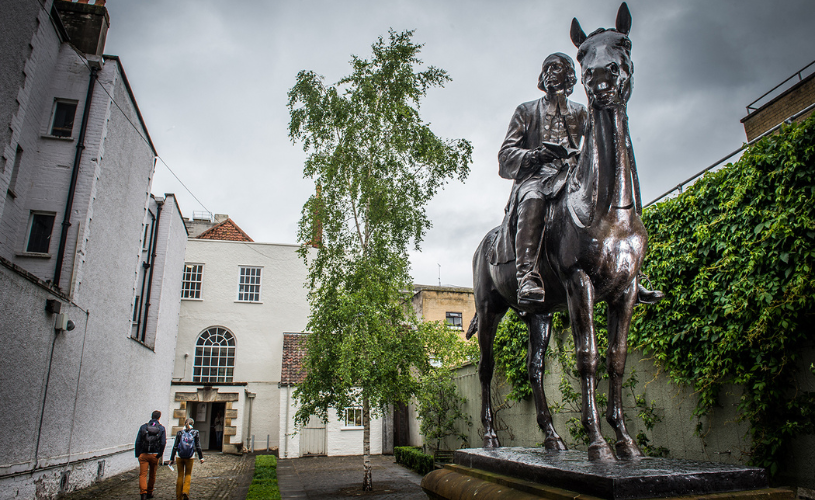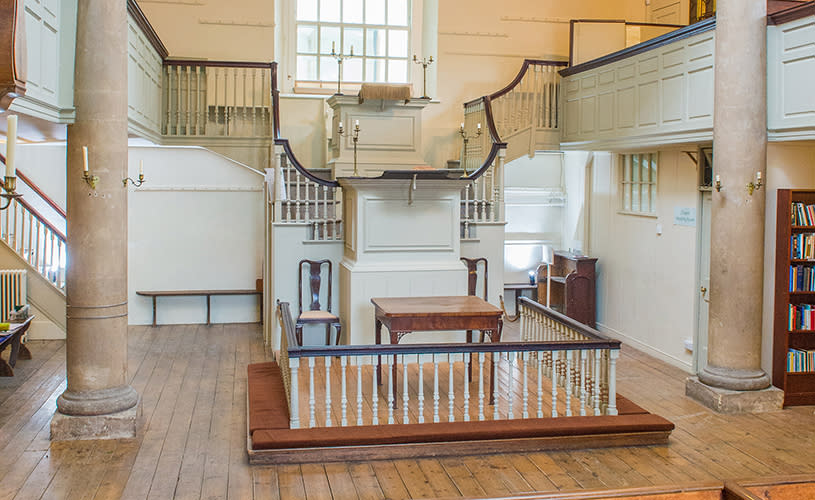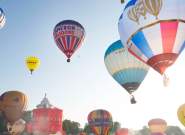Follow in the footsteps of two of the founding Methodists, John and Charles Wesley, on this walk that takes you from place to place in their Bristol story.
Who were the Wesley brothers?
John and Charles Wesley were the most significant figures in the religious revival in Britain during the 18th century. Their work not only influenced religious life in the UK but also social and political life over the following centuries. As the founders of a world-wide movement their influence is still seen in many nations.
Visitors from all over the world, and from many different Christianities, come to visit the first Methodist chapel ever built, John Wesley's New Room in Broadmead. And that’s where the Wesley Walk begins…

Image credit: The New Room
The Wesley Walk
1. In the Broadmead courtyard of John Wesley’s Chapel is John Wesley’s equestrian statue. John arrived on horseback in Bristol on Saturday 31 March 1739, having been invited by the Rev George Whitefield who wanted him to take over the work he had been doing in Bristol with the religious societies and in outdoor preaching. Whitefield wanted to return to America to build the orphanage for which he had been collecting money. He had been a member of the Wesleys’ religious society (‘The Holy Club’) at Oxford University.

Image - The New Room
2. Head to where the entrance to The Galleries car park is on Newgate Road to see the site of the former Newgate prison. John Wesley preached to prisoners daily here, as well as campaigning for better conditions and encouraging fellow Methodists to do so too.
3. Cross the road to Castle Park to find St Peter’s Church, the church John Wesley attended with George Whitefield on his first Sunday in Bristol.

Image credit: St Peter's Church in Castle Park
4. Exit the park onto Wine Street. Here was the home of Mrs Grevil, George Whitefield’s sister, where John Wesley lodged.
5. Back through the park to the other side you come to Castle Street, where one of Bristol’s religious societies met.
6. Next continue on to corner of Old Bread Street and New Kingsley Road to see the plaque on the boundary wall of the Gardiner Haskins car park that commemorates the site of John Wesley’s first open air preaching site – the Brickfields. The date was Monday 2 April 1739.
7. Temple Church and Gardens is just off Victoria Street. Here Charles Wesley was forbidden entry when in 1740 he came with some miners from Kingswood for Holy Communion. In later years both John and Charles Wesley led worship and preached here. The site of the Weavers Hall is where John Wesley visited his first Bristol religious society with George Whitefield on the Saturday evening he arrived in Bristol.

Image credit: Temple Gardens
8. Make your way over Bristol Bridge towards Baldwin Street and Nicholas Street. Religious societies met in rented rooms in both these streets.
9. An open space near The Pithay is where on Sunday morning, the first day after he arrived in Bristol John Wesley had his first experience of hearing George Whitefield preach in the open air. It became a regular preaching place for John.
10. Head to St James Priory next to the bus and coach station, a Norman church that was the Wesleys’ local parish church where they would go for worship in ‘church hours’. Worship was not conducted in the Methodist building when there was worship in the local parish church.

Image credit: St James Priory
11. Move on to 4 Charles Street. Charles Wesley, his wife Sally and their children lived in various houses in this area between 1749 and 1771. This was the house they occupied between 1776 and 1771. It is now restored as it is likely to have been during their occupation and is available to visit by pre-booked group tours.
12. Return to St James Park where six of Charles Wesley’s children are buried. Their gravestone still stands even though most of the others have been removed.
13. Back towards the Horsefair courtyard of the New Room is Charles Wesley’s statue. It commemorates one of the greatest hymn-writers of all time. Many of his hymns are still used by Christians all over the world, such as ‘Hark, the herald angels sing’ and ‘Love divine, all loves excelling’.

Image credit: The New Room
14. Finally, enter The New Room, first built in 1739 and enlarged in 1748. It was not built as a church but as a multi-purpose room and was used for meetings of the religious societies, for education as a school and book room, as a pharmacy for the poor and as a place where the unemployed were given work particularly in the severe winter of 1740/41. Charles Wesley was the minister here while living in Bristol.
Don't leave without exploring the on-site museum, which has 12 interactive rooms that take you through the history of Methodism in the 18th and 19th centuries and its relevance today as well as the fascinating lives of John and Charles Wesley. The Café at the New Room is the perfect place to rest your feet after the walk and refuel with Fairtrade coffee and home-baked treats.

Image credit: The New Room
Read more:





